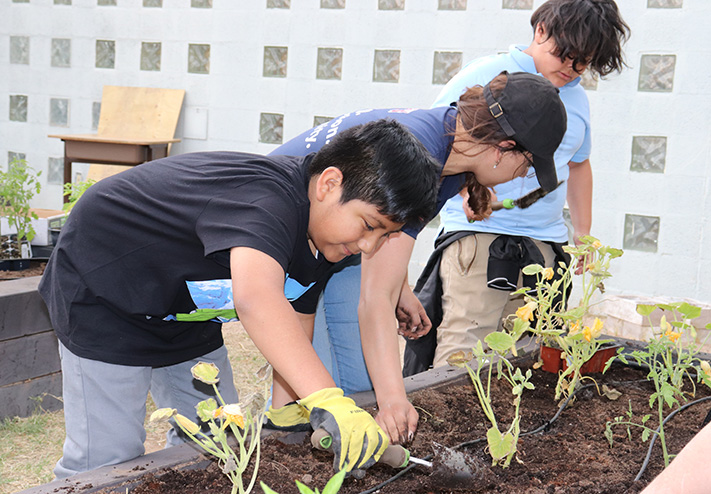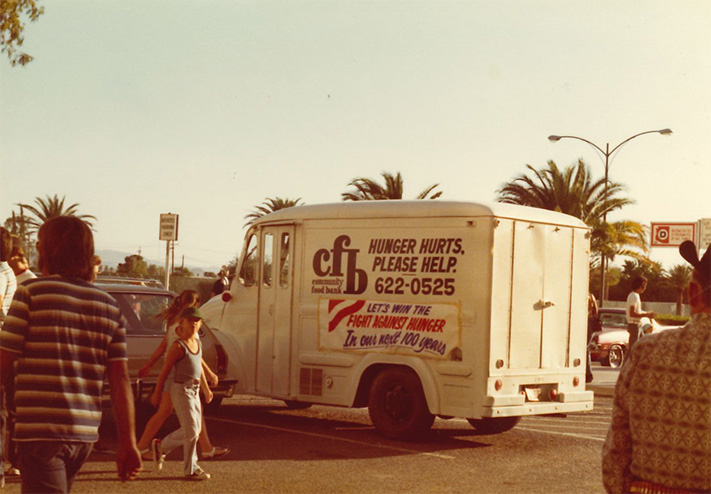Our Mission
The Community Food Bank of Southern Arizona responds to the root causes of hunger, and seeks to restore dignity, health, opportunity and hope to people living in poverty. Our mission is to ensure our communities are healthy and hunger-free today, tomorrow, and always.

Our Work
Our programs include emergency food assistance and free meals, as well as a farmers’ market, community gardens, nutrition education, culinary training, support for local growers and food systems, advocacy, and more. We partner with over 400 organizations to serve five counties of Southern Arizona—over 23,000 square miles.
We’re a proud partner food bank of Feeding America, a nationwide network of food banks and hunger relief organizations. In 2018, we were named Food Bank of the Year by Feeding America, in large part because of our innovative work rescuing fresh produce from the border of Mexico and redistributing it to local families and other food banks.
Our Roots
In 1975, the advocacy organization Food Action Coalition of Tucson became the Community Food Bank of Southern Arizona, founded by Barry Corey and Mark Homan. More than 45 years later, we have grown from one facility in Tucson to eight locations serving five counties of Southern Arizona. True to our advocacy roots, we have become a national leader in the food security and food justice movements.

Land Acknowledgment
We live and work on stolen land. This land acknowledgement recognizes and respects Indigenous Peoples as traditional stewards of the land we work and live on.
Every community owes its existence and vitality to generations from around the world who contributed their hopes, dreams, and energy to making the history that led to this moment. Some were brought here against their will, some were drawn to leave their distant homes in hope of a better life, and some have lived on this land for more generations than can be counted. Truth and acknowledgement are critical to building mutual respect and connection across all barriers of heritage and difference.
We begin this effort to acknowledge what has been buried by honoring the truth. The Native communities around Tucson number over 30,000 strong and are descended from many tribes and native communities. We are gathering on the ancestral and occupied lands of the Tohono O’odham, Pascua Yaqui, and many more who may call this place home. We pay respects to their elders past and present. Please take a moment to consider the many legacies of violence, displacement, migration, and settlement that bring us together here today.
Our land acknowledgement evolves as our own understandings of our work in solidarity to Indigenous struggle grows. We would love to hear thoughts or feedback from you. This land acknowledgement text is adapted from recommendations found in the USDAC guidebook on honoring native land, which can be found at https://usdac.us/nativeland.
